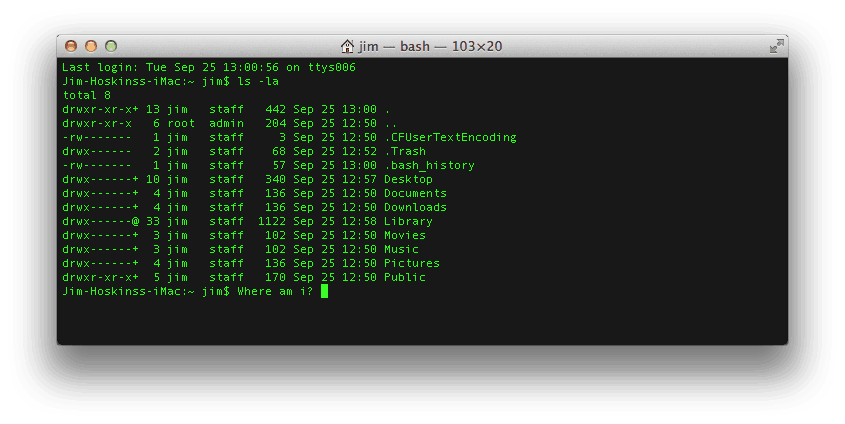Read Unix For Mac
Unix for Mac OS X Users unlocks the powerful capabilities of Unix that underlie Mac OS X, teaching how to use command-line syntax to perform common tasks such as file management, data entry, and text manipulation. The course teaches Unix from the ground up, starting with the basics of the command line and graduating to powerful, advanced tools like grep, sed, and xargs. The course shows how to enter commands in Terminal to create, move, copy, and delete files and folders; change file ownership and permissions; view and stop command and application processes; find and edit data within files; and use command-line shortcuts to speed up workflow. Exercise files accompany the course.
Instructor. Kevin Skoglund builds custom web solutions at Nova Fabrica, and teaches web development to others at Lynda.com.
Apple Unix
Kevin Skoglund is the founder of, a web development agency specialized in delivering custom, scalable solutions using Ruby on Rails, PHP, SQL, and related technologies. Nova Fabrica clients include An Event Apart, Atlas Carpet Mills, Consulate Film, Gregorius Pineo, Maharam, Oakley, and The Bold Italic. Kevin is a lynda.com author with over 15 years of teaching and web development experience. By: Sean Colins course.
6h 50m 28s. 2,080 viewers.

Course Transcript Now we will learn how to read the contents of a file. Now you may be thinking, why not to use Nano to open and read the contents of a file? Well, you certainly can. In fact I do it all the time. But what we are interested in here are tools which are designed just for reading files. This difference will become important later because we'll learn that to read a file really just means to output the text to your screen and we'll learn to direct that output that places besides our screen and even to other commands.
A tool like nano which depends on user interaction would do too much for us and it would get in the way. Now, we have a couple of options for reading files. The first is cat. Cat is the simplest and the one that you would use most often. It has kind of a funny name, because cat is short for concatenate. You see, cat doesn't just read a file. It will concatenate or join several files together.
$# In Unix
You can think of it as read and output the first file, then immediately read and output. Practice while you learn with exercise files. Watch this course anytime, anywhere.
Course Contents. Introduction Introduction. 1. Introduction to Unix 1. Introduction to Unix. 2. Filesystem Basics 2.
Filesystem Basics. 3. Working with Files and Directories 3. Working with Files and Directories. 4. Ownership and Permissions 4.
Ownership and Permissions. 5. Commands and Programs 5. Commands and Programs. 6. Directing Input and Output 6.
Directing Input and Output. 7.
Configuring Your Working Environment 7. Configuring Your Working Environment. 8. Unix Power Tools 8.

Unix Power Tools. 9.
Useful Mac-Only Commands and Techniques 9. Useful Mac-Only Commands and Techniques. Conclusion Conclusion.